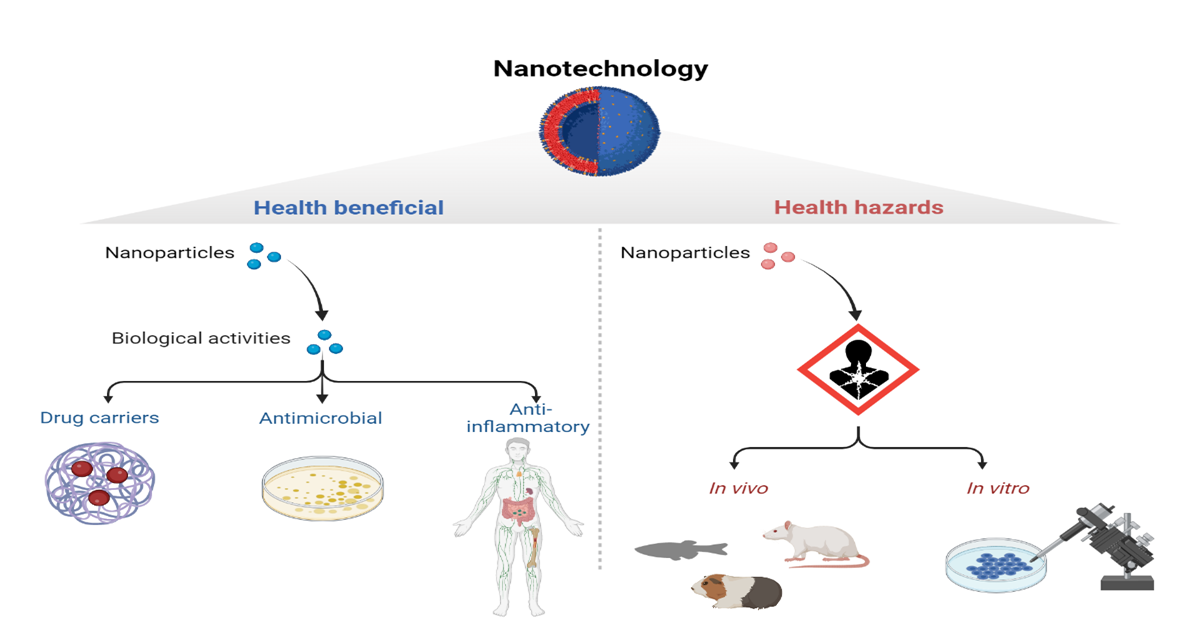Nanotechnology in Health Beneficial Applications and Its Hazards
A special issue of Applied Sciences (ISSN 2076-3417). This special issue belongs to the section "Nanotechnology and Applied Nanosciences".
Deadline for manuscript submissions: closed (20 June 2023) | Viewed by 449

Special Issue Editors
Interests: microbial resistance; phytotherapy; immunology; nanotoxicology; applied microbiology; nano-composites
Special Issues, Collections and Topics in MDPI journals
Interests: fabrication of nanofiber membrane; biodegradable nanofibers; electrospinning
Special Issues, Collections and Topics in MDPI journals
Special Issue Information
Dear Colleagues,
The effect of the natural sciences and engineering has been completely transformed by nanotechnology. Nanotechnology focuses on the creation and use of nanomaterials, or substances with dimensions smaller than 100 nm. Size is the defining characteristic between nanoparticles and other materials; specifically, nanomaterials are defined as having a size of 100 nm in a single dimension, whereas non-nanomaterials are defined as having a size of >100 nm in all dimensions.
Nanosensors, nano-sorbents, and fuel cells are just a few examples of the many applications made possible by nanomaterials' superior performance due to their larger surface area to volume ratio. And in both gas and liquid phases, nanomaterials have demonstrated increased adsorption capacity. Nanomaterials' small size, quantum effect, and large surface area give them many potential applications. Material selection, doping, and composition can also affect other properties, such as physical, chemical, morphological, mechanical, thermal, optical, magnetic, and conductivity. The unique properties of these nanomaterials have been used in a wide variety of scientific, technological, and engineering disciplines by dedicated scientists and researchers. Energy, medical, environmental research, IT, and food safety are just a few of the key technological industries experiencing and benefiting from the great effect of nanomaterials. Biofunctionalization of some nanoparticles for biomedicine applications proved their powerful presence in relation to in vitro and in vivo analysis protocols that ideally include drug delivery, and several recent astonishing progresses.
In this Special Issue, we will be devoted to publishing original research and review articles that address these topics and include advances, trends, challenges, and future perspectives regarding synthesizing newly designed nanomaterials and investigating their characteristics as well as enhancing the biological activities and reducing the possible toxicity.
Dr. Bassma H. Elwakil
Dr. Mohamed Hagar
Guest Editors
Manuscript Submission Information
Manuscripts should be submitted online at www.mdpi.com by registering and logging in to this website. Once you are registered, click here to go to the submission form. Manuscripts can be submitted until the deadline. All submissions that pass pre-check are peer-reviewed. Accepted papers will be published continuously in the journal (as soon as accepted) and will be listed together on the special issue website. Research articles, review articles as well as short communications are invited. For planned papers, a title and short abstract (about 100 words) can be sent to the Editorial Office for announcement on this website.
Submitted manuscripts should not have been published previously, nor be under consideration for publication elsewhere (except conference proceedings papers). All manuscripts are thoroughly refereed through a single-blind peer-review process. A guide for authors and other relevant information for submission of manuscripts is available on the Instructions for Authors page. Applied Sciences is an international peer-reviewed open access semimonthly journal published by MDPI.
Please visit the Instructions for Authors page before submitting a manuscript. The Article Processing Charge (APC) for publication in this open access journal is 2400 CHF (Swiss Francs). Submitted papers should be well formatted and use good English. Authors may use MDPI's English editing service prior to publication or during author revisions.
Keywords
- applied nano
- applied biosciences
- nanotoxicology
- nanofabrication
- nanostructure characterization
- nanocomposites
- nanoemulsions
- drug delivery
- water treatment
Benefits of Publishing in a Special Issue
- Ease of navigation: Grouping papers by topic helps scholars navigate broad scope journals more efficiently.
- Greater discoverability: Special Issues support the reach and impact of scientific research. Articles in Special Issues are more discoverable and cited more frequently.
- Expansion of research network: Special Issues facilitate connections among authors, fostering scientific collaborations.
- External promotion: Articles in Special Issues are often promoted through the journal's social media, increasing their visibility.
- Reprint: MDPI Books provides the opportunity to republish successful Special Issues in book format, both online and in print.
Further information on MDPI's Special Issue policies can be found here.






